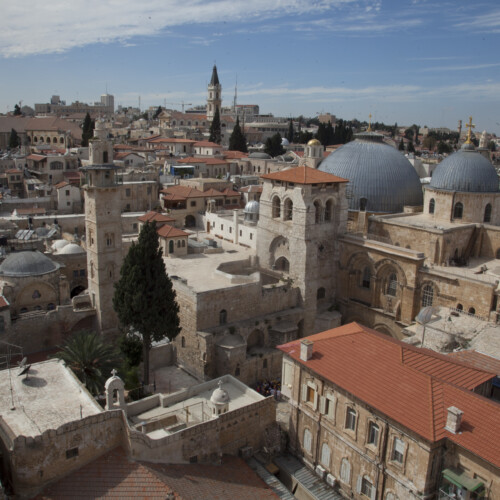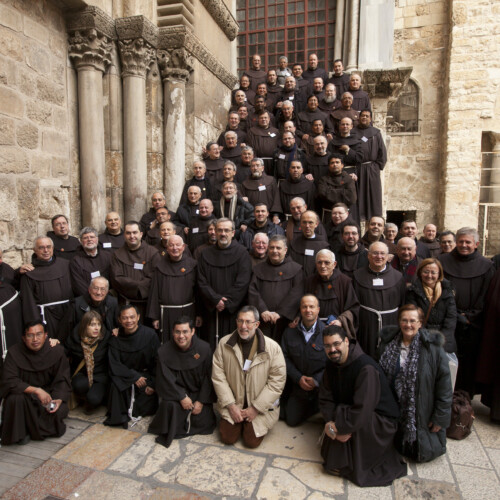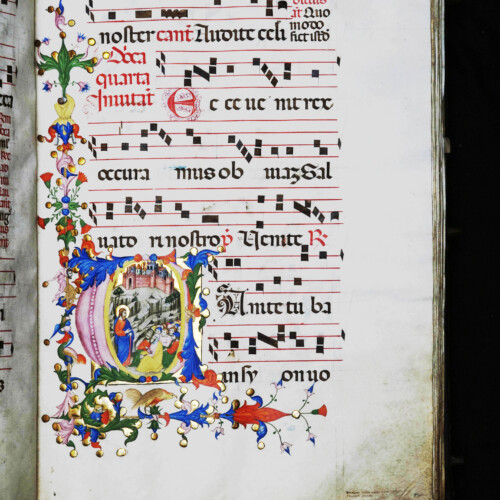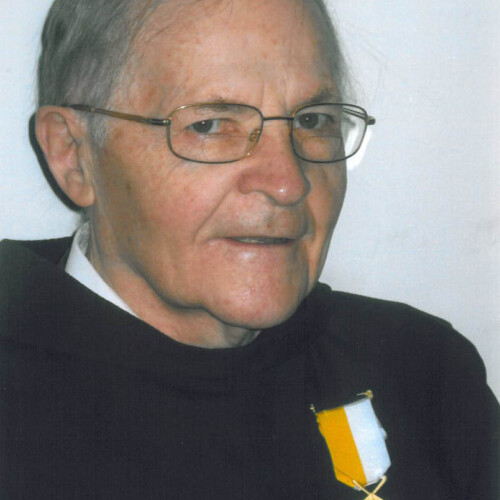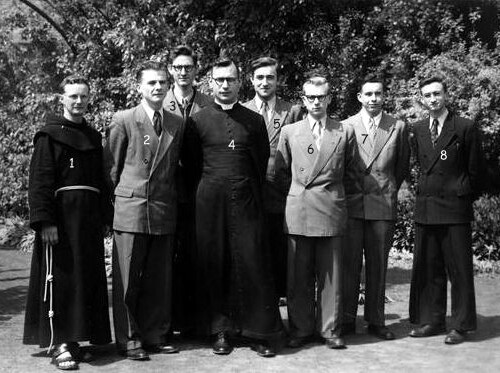The Terra Sancta Museum pays tribute to the Commissars of the Holy Land
The Custody of the Holy Land has established 15 February 2021 as a day of thanks and prayer for the commissars and benefactors of the Holy Land. The Terra Sancta Museum joins in this initiative and looks back at these figures who were so essential in sending liturgical objects to Jerusalem.
Six hundred years ago, the Church officially recognised the role of the commissars of the Holy Land. Pope Martin V (1417 – 1431) declared in his bull “His quæ pro ecclesiasticarum”: “that the same authority generously grants to the Brothers the offerings that are given […] by the pious generosity of the faithful and which are used to support the life of the Custos and of the Brothers through their Procurators or Commissars.”
At the time, the life of the Friars in the Holy Land, the gradual recovery of the Holy Places – then under Ottoman rule since the capture of St John of Acre in 1291 – and daily worship were possible only thanks to the support of the Christian princes.
“The objects sent satisfied the needs of the communities who lived in autarchy: money, food, medicines, books, objects and various utensils, including material and ornaments for worship, both for ordinary times and for feast-days and special ceremonies,” explains Danièle Véron-Denise in the catalogue of the exhibition in Versailles (France) “The Treasure of the Holy Sepulchre,” published in 2013.
Well aware that they could not be in Europe and in the Holy Land at one and the same time, our missionaries entrusted a third party with the task of managing the alms they received in Europe. The first layman mentioned, in 1392, is the Venetian merchant Ruggero Contarini. He was close to Father Gerard Chauvet, then Custos of the Holy Land, and was appointed “procurator for the territory of the Republic of Venice”, always keeping in touch with the Custos. Contarini acted as mediatory for the important donation by Henry IV of England. The king offered the wood for the restoration of the roof of the Basilica of the Nativity and a series of precious illuminated Antiphonaries, of which three volumes are still in the General Library of the Custody of the Holy Land.
Over the centuries, these laymen were gradually replaced by friars, and today all the commissars of the Holy Land are religious. It is impossible to say when the term “Procurator” was abandoned in favour of that of “Commissar”, a word borrowed from the Venetian juridical term.
If we do not have a precise chronology of the establishment of the Commissariats, we do know, for example, that the Commissariats of Naples, Paris and Vienna were founded in the first half of the 17th century. More surprisingly, but proof of the missionary vitality of the Order, at the start of the 18th century a Commissariat was established in Buenos Aires. The items for the Franciscans were collected in the Commissariats until they were transported to Jerusalem by the Father Commissars.
Like real cogs and guarantors of the correct transport of the goods and devotional objects, our Commissars have faced pirates, storms, bandits and disease!! When they arrived, each of their objects was carefully recorded in registers of entry called “Condotte” (from the Spanish “Conductas”). On display in the Terra Sancta Museum, these registers allow us to trace the origin of the works and many of the Commissars have left their names in the aforementioned registers. Balthasar Caldera, Commissar of Naples, Father Antonio di Sant’Agostino, Commissar of Portugal, Father Michel de Picauville, Commissar of France and Father Bernardo Soler, Commissar of Catalonia. For the 18th century, Father Giovanni Antonio Yepes Yepes, Commissar of Naples, Father Florentius Dalleur, Commissar of Vienna, as well as Father Pirmin Hasenöhrl. Let’s not forget the more recent ones, like Frans Cornelissen (1943-2006), the Flemish Commissar, who built up a collection of 206 ancient icons for the Custody, or Father Stanislao Bertagnolli, Commissar Emeritus of Vienna, who financed the creation of eight organs for the main shrines of the Custody of the Holy Land.
Acknowledging their loyalty and that of all benefactors, the Custody of the Holy Land has decided to dedicate to them a moment of prayer on 15 February every year. With our best wishes, Father Commissars!

